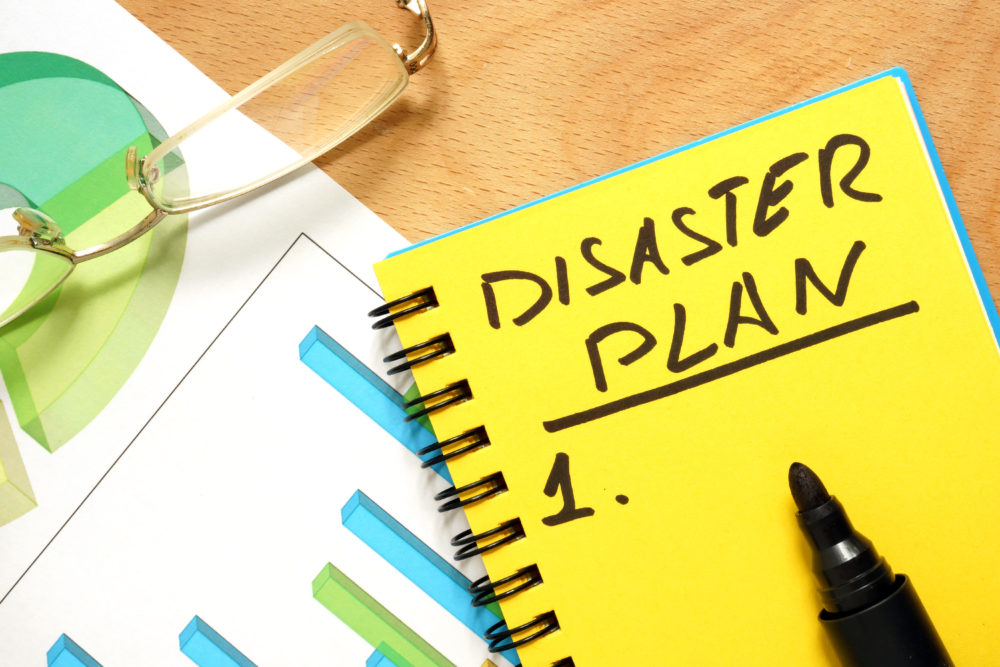Launching a business – no matter the industry or sector – involves a certain amount of risk. A comprehensive business plan should mitigate most known variables but what if the worst were to happen? Would you be prepared?
Graham Precious and his wife Karen launched their first at-home care franchise in 2008. Ten years on, Caremark East Riding provides 7,500 of care per week and is one of the largest providers in the area, employing 400+ carers. The only reason he can say that now is that his business plan included a practical disaster plan. A figurative ‘emergency button’ to press, if either of the founders suddenly weren’t around to steer the ship. Precious says that people though it was funny or a bit OTT at the time.
Karen was diagnosed with breast cancer in 2015 and passed away in March 2017. The disaster plan was put into action on the day that she received her diagnosis. After Karen’s passing, Graham took a year out to look after his children and now, though still grieving, he is returning to a business which has endured thanks to careful planning and difficult discussions from day one.
‘Whenever anyone asked me why we had a disaster plan, my answer was always, ‘Because no one is invincible,’ Precious says. ‘And it’s why you should too. It’s just as important as planning the structure of the business, your internal culture and your financial growth.’
Karen and Graham had nearly ten years’ of experience in franchising before they launched Caremark East Riding. When the time came to put together their business plan, they spoke candidly about what would happen if they were to need to step away from the business, without warning, and for a potentially detrimental amount of time.
Built into the business from day one
‘The plan wasn’t a Word document, an Excel spreadsheet, or a big red file marked ‘read in case of emergency’ – sorry to disappoint! We built it into the business from day one.’
When the pair launched the business, Karen (a former nurse) was the registered care manager, a role which was very much operational. As managing director, Graham oversaw the finances and business development. ‘The crux of our plan was to create a culture of succession and earmark the talent that would step into our shoes in a worst-case scenario,’ he says. ‘Through our robust recruitment process, we found the right people to fulfil those roles, so one shadowed Karen, and the other shadowed me. This lead to an almost complete understanding of the business from operations and finance, to regulatory requirements and best practice, right through to how to replicate our tone and culture with our employees.’
This imaginary ‘read in case of emergency’ didn’t have a ‘Top Secret’ stamp on it either. ‘Nothing that’s intrinsic to the business’ longevity should be kept private,’ Graham explains. Our ‘successors’ – Daniel and Chris – had full access to our business plan, which included this disaster plan, and the expectation had always been communicated to them. They were fully aware of the domino effect which would be set in motion if the worst-case scenario were to take place – they would simply take on the roles they’d been collaborating on us with, full time, until myself and Karen were able (if at all) to return.’
The plan kicked in the day that Karen received her diagnosis. Although, on paper, the pair had a detailed view of what would happen, they discovered that even the best laid plans don’t always run smoothly.
‘Karen was never a very good delegator and it came to light that she’d been busying herself in the office with a lot of menial and time-consuming tasks,’ Graham says. ‘A lesson for any business owner – delegation is crucial, especially for long-term growth and sustainability. Thankfully, under the capable supervision of Daniel and Chris, these jobs were shared among our team and they did a wonderful job of ‘sweating the small stuff’ on our behalf.’
>See also: Six contingency planning tips for small businesses
Evolution and growth
This year, Graham began the process of reintroducing himself into the business as a mentor. Daniel and Chris have adopted their tone of voice and the management style, and the business has thrived in the time Graham has been away. ‘There’s no need for me to come in and step on anyone’s toes but, at the end of the day, it’s still my business and Karen’s legacy. I offer business insight, where needed, and communicate with Daniel and Chris on a daily basis,’ he says.
“Recognise the risks – and don’t assume the only risks to your business will be financial”
As a result of the success of the disaster clause in the business plan, Graham recently made the decision to replicate the framework for Chris and Daniel. ‘I’ve already stated that no one is invincible and, now more than ever, I refuse to bury my head in the sand and assume the management structure will continue as it is,’ he says.
Chris and Daniel now both have ‘second in commands’ working underneath them, shadowing them – exactly how they did with Graham and Karen – and who will be there to step into their roles in case of emergency. This is Disaster Plan 2.0.
Top tips for avoiding disaster
Assuming your business will never be exposed to tragedy – whether a financial crisis, a staffing collapse, or, as in this case, a personal loss – is to set yourself up for (almost avoidable) disaster, Graham says. ‘Don’t bury your head in the sand – no business is perfect but you’ll never be able to fix a problem if you refuse to admit it exists. Recognise the risks – and don’t assume the only risks to your business will be financial. And stick to your guns – make a plan and execute it. Don’t let the small stuff sway you off course.’





